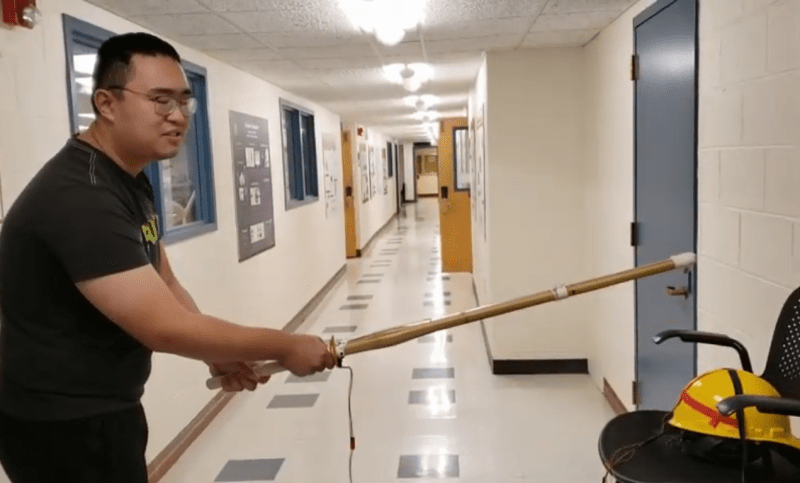Kendo, a Japanese martial art, is practiced with a special sword. It’s not a particularly sharp sword, though, since the “blade” is essentially a length of bamboo. For this reason, Kendo practitioners must rely on correct form and technique in order to make sure their practice is as effective as possible, and Cornell students [Iman] and [Weichen] have made a Kendo trainer that helps the swordsmen in their art.
The core of the project is a PIC32 microcontroller hooked up to a set of three piezoelectric sensors and a LSM9DS1 inertial module. The three piezoelectric sensors are attached to a helmet and the inertial module to the sword, and the sensors work together to determine both the location of the strike and whether or not it had enough strength to be considered a “good” strike (the rules of Kendo are beyond the scope of this article). The trainer can then calculate all of the information and provide feedback to the user on a small screen.
While martial-arts related builds seem to be relatively rare, we did find a similar project from back in 2011 called the Virtual Sensei which used a then-popular Kinect in order to track movements. This PIC32-based project, though, seems to be a little more thorough by including the strength of the strike in the information the computer uses, and is probably less expensive to boot!
















I joined a Kendo club in a Japanese school as a teacher back in 2007 in Sapporo. It is a very satisfying thing to feel the weight of the “sword”, and the rules really encourage correct form.
Seems actually like a perfect use of a microcontroller to log position and force since the sword is by nature hollow, but designed for impact. Having a way to analyze strikes and swing form like this would honestly be very useful in training, if calibrated on someone skilled like an instructor.
Trilateration is what happens to a countries banking system when the Trilateral Commission gets through with it. I have never ever heard of this in geometry. Was it coined up by GPS users? Maybe as a way to do the intersection of three spheres with law of cosines and a way surveyors can understand (which means it isn’t a geometric process)?
It’s a common term in positioning systems. Triangulation= finding location by measuring angles from three known references. Trilateration = finding position by measuring distances
From my experience as sword fencing trainer(HEMA) from hitting ideally on spot edge aligment is more important. We did cut tests on pig carcass even slight off hand cut with sharp sword goes through all tissiues and stops on bone, gambesson stops offhand cuts and ones that arent done with edge proper aligment, period correct steel armour stops cuts you need to go to graple and put point into cracks like eye slits, joints and so on. Kendo is more like sports fencing they just assume that sword lands with good aligment and give points for placement of hits, which is wrong. Take sharp sword and do tatami cuts (or bottles) edge aligment is more important than strenght.
yes and no. while kendo does not translate directly to tameshigiri (cutting mats) its more than just point sparring. a correct hit with alignment and placement is not enough in kendo for ippon.
there have been several of these types of projects over the years, the problem is its not just path of the shinai and force that matters for kendo, grip so called tenouchi plays such a strong factor as well as the footwork.
sensors in the blade and helmet would not be enough to create a valid strike, you also need correct followthru and posture. while a interesting project this is fundamentally useless in training for kendo…
souce, practiced kendo in college and hold a sandan (thrid degree black belt) from the auskf.
1 accelerometer on each shoulder and ankle would do it. (4 in total, hips not required as can’t follow through correctly without moving your lower body.)
For the static warm-up exercise, this is just fine. I would amend how tightly grip is held at what point would matter as well.
I am reminded of the scene from the first total recall where Sharon Stone is using the virtual assistant that does analysis on tennis form serve.
Might be nice to have competitions live with holograms if we ever fix the damned bandwidth problem.